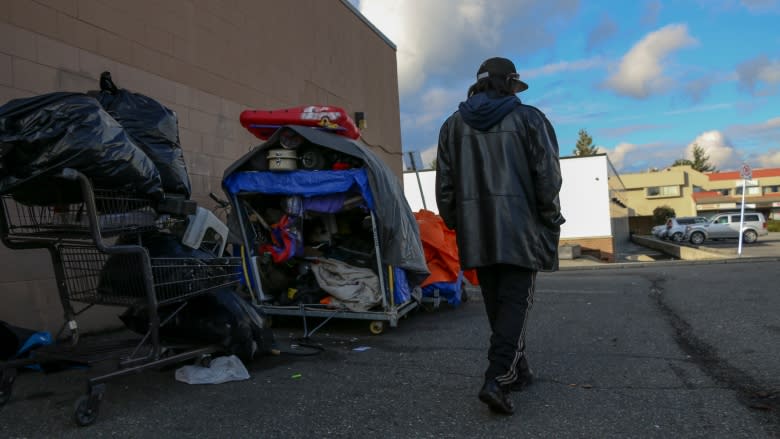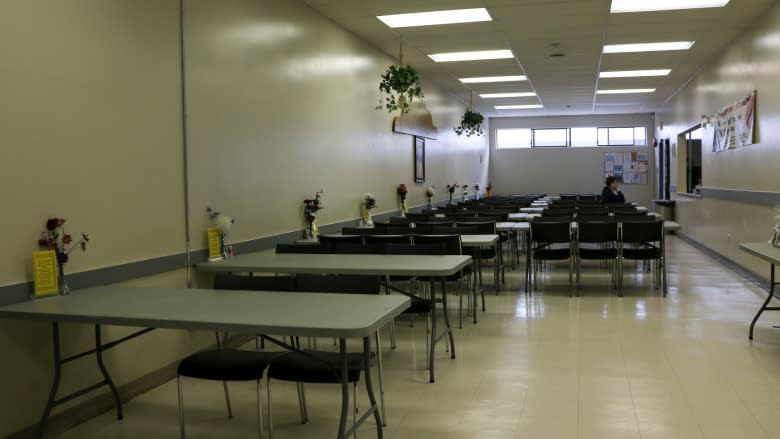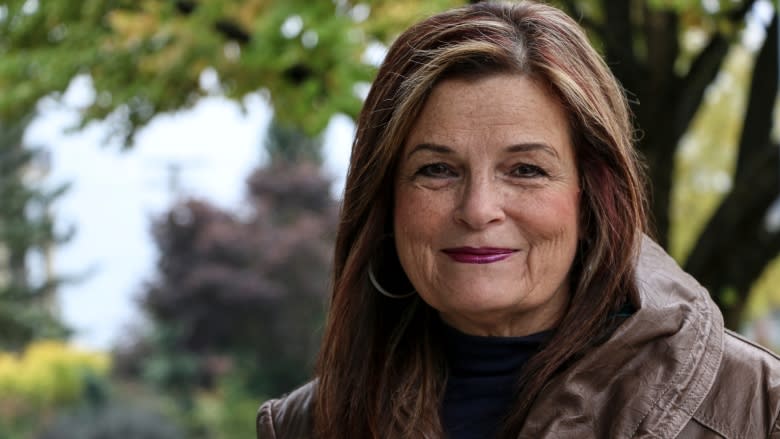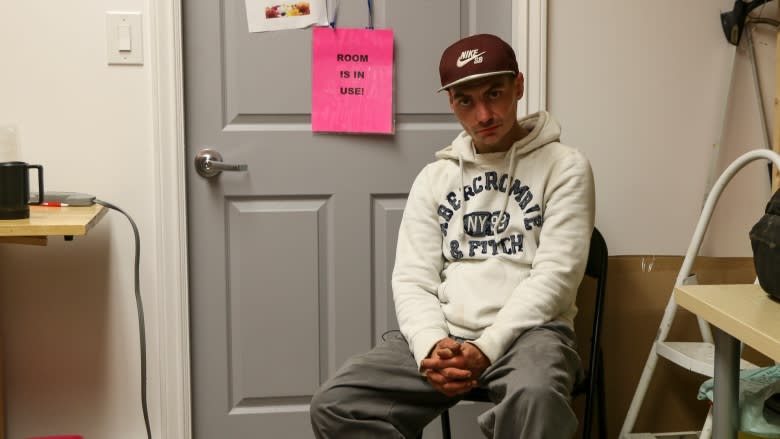Fraser Valley homeless population grows faster than Vancouver's
Every evening, homeless people in Chilliwack, B.C., start lining up outside the Salvation Army soup kitchen around 8:30 in the evening.
Not for food, but for one of 30 coveted air mattresses.
"We could use probably triple [the beds], given the numbers that are out there," says Tim Bohr, the Chilliwack Salvation Army's community ministries director.
"So that's been the hardest thing to do, to recognize that ... my staff turns people away every night. We are just simply full."
Chilliwack has a population of over 80,000 people, but those 30 mattresses are the only emergency overnight shelter available in the city.
"Obviously this is not an ideal location .... we would much rather have a longer-term solution," said Bohr.
He's been working for the Salvation Army for over a decade. But it's only recently that issues of homelessness have become widespread there.
The issues of drug addiction and housing affordability have grown throughout the Lower Mainland, and intertwine in ways large and small.
But numbers released this year gave tangible proof to something officials and social workers already understood anecdotally: homelessness is growing in the Fraser Valley faster than anywhere else and likely won't go down anytime soon.
"It's kind of come as a shock," said Bohr.
"This small town, rural area, suddenly we have this huge big city problem."
'This is a new phenomenon'
Every three years, regional districts in Metro Vancouver and the Fraser Valley compile a report on the homeless population based on an extensive one-day count.
It's not an exact census, but if you compare the numbers from 2017 to 2014, the trend is clear: homelessness is growing faster in the Fraser Valley than Vancouver.
In Chilliwack, the homeless count nearly tripled, from 73 to 221 people. In Abbotsford, it went from 151 to 271. Overall, the area spanning from Langley to Chilliwack saw its homeless population increase by 86 per cent, compared to a 19-per-cent rise in Vancouver.
"This is a new phenomenon for most of the Lower Mainland, and one we are not financially equipped to deal with," said Sharon Gaetz, who has been mayor of Chilliwack since 2008.
At last count, there were 18 different homeless camps spread throughout the large municipality, Gaetz said. And like other politicians in the region, she highlights the fact that housing is a provincial responsibility.
"Those ones we sometimes think of as big city-issues, we face them right here in our community without the kind of resources that we need to face the issue head on."
Housing Minister Selina Robinson said homelessness was the issue that motivated her to become a Coquitlam councillor a decade ago.
"Seeing it creep out to the Fraser Valley is saddening, but not surprising," she said. "Many local governments do the best they can, but they've been missing a partner."
Robinson said the province has taken immediate action by funding over 2,000 modular housing units for around B.C., but couldn't say if there was anything specific being done in Chilliwack.
"BC Housing has been in touch with Chilliwack about whether these modular housing units are appropriate ... the work about actually making an announcement starts with a conversation."
It's not the easiest political discussion in cities that have traditionally been suburban-oriented. Abbotsford city officials infamously smeared chicken manure on a homeless camp in 2013, and Maple Ridge has been facing heated public protests over how to best deal with the burgeoning crisis.
Jack Froese, the two-term mayor of the Township of Langley, says homelessness is a reality and responsibility municipalities need to own up to.
"There are always people who will complain bitterly about why is it here, and why can't we just do something," Froese said.
"But in our society today, we can't just do something that easily. We're dealing with individual people with individual needs."
Affordability and addiction
Talk to municipal officials in the Fraser Valley, and the same root causes are brought up again and again: mental illness, drug addiction, and housing affordability.
They're not unique issues. But in the Fraser Valley — where the scale of social housing and single resident occupancy units isn't close to that of B.C.'s biggest cities — it has put a particular pressure on the most marginalized.
"Many of us have criminal records out here, and they do credit checks," said Tyler Kelly, who has been living at camps around Abbotsford since being released from jail two years ago.
"If you don't have that credit, or if you have a criminal record, it is really hard for anybody ... in that state to get a house out here."
Clarence James is another person in Abbotsford who hasn't been able to find an affordable place with a landlord willing to rent to him.
"We went to a house, just to look at, and the guy never answered the door, " James said.
"He saw us, we've seen him, but he wouldn't open up the door because we had backpacks on. He considered us homeless."
'It could get worse'
Both Kelly and James are among the hundreds of people who use the services of Positive Living Fraser Valley Society. The non-profit was founded 11 years ago to help people with HIV and other blood borne infections, but in recent years has evolved its mission.
"About four years ago [we] started working also with that population and our demand for services increased 932 per cent in the first year," said Kari Hackett, its executive director.
While its office is close to downtown Abbotsford, the city's homeless population, like Chilliwack's, is dispersed over a dozen smaller camps and informal communities, from urban forests to rural camps.
Hackett says that's by design.
"They don't want to create like a singular area within the Abbotsford community that is known as skid row or where all the homeless encampments are. They don't want to have all the services in one area."
Hackett said the municipal government that has been in place the last three years has been helpful, and she's hopeful that new funding for her organization, new modular housing, and a greater focus on harm reduction will help her city.
But she acknowledges that even in a best-case scenario, it's an open question of what success will look like.
"It could get worse before it gets better," she warns.
"It's mushroomed, there is more people coming. And I don't really see an end to it anytime soon."
With files from Tina Lovgreen





